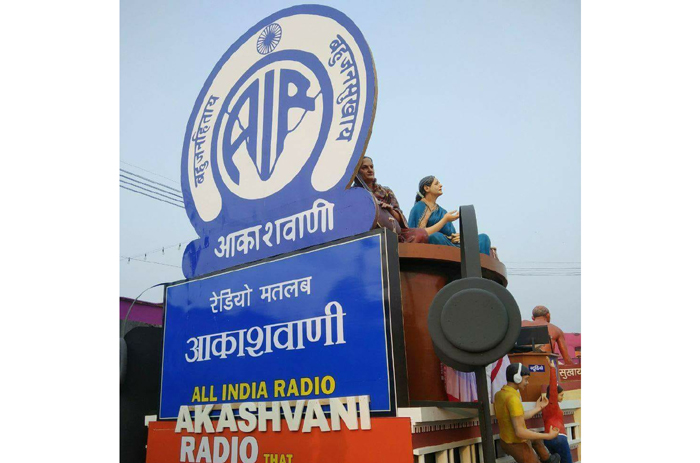Under the present dispensation, Akashvani has become whimsical. Programmes are started, dispensed with, renamed or disrupted abruptly, reminding of Prime Minister Narendra Modi’s whimsical announcements of demonetisation and lockdown without any planning, forethought or preparations for the consequences likely to follow.
One afternoon some weeks back the Bhopal station of Akashvani abruptly started relaying Punjabi news bulletin, followed by Urdu news bulletin, abandoning regular programmes which the station had been airing for years. The timeline now is: Punjabi news bulletin (1.40 — 1.50 PM), Urdu news bulletin (1.50— 2 PM), English bulletin (2 PM— 2.30 PM) and Hindi news bulletin (2.30 – 3 PM). Some day Punjabi and Urdu bulletins would abruptly disappear, as these disappeared on June 16. Praadeshik Samachar (regional news) has become Akashvani’s unwanted child. It is aired at 2 PM when the Delhi is airing English news bulletin. After the regional bulletin is over, one is all of a sudden connected to English bulletin, sometimes in the mid-sentence of a news leaving the listener wondering what the news is about. On June 23, the English news bulletin was through 13 or 14 minutes when Dopahar Samachar started and after that again English bulletin somewhere in the middle of a news.
The Bhopal station had in the afternoon a 45-minute programme which was very popular among women. It was called Naari Shakti. Some time back, it was renamed as Srishti Roopa. Did it make any sense? Now the programme has been altogether dispensed with. Two five-minute Sanskrit news bulletins, one in the morning and the other in the evening, were started by Akashvani when Indira Gandhi was the Information and Broadcasting Minister in the Lal Bahadur Shastri cabinet. These bulletins were relayed by all the regional stations of Akashvani. Bhopal and some other regional stations abruptly stopped relay of evening Sanskrit bulletins —- and then after a gap abruptly resumed it.
All India Radio or Akashvani has frequently been like a toy in the hands of the rulers but never before has it been so much abused as now. In the mid-1970s, and also during the Emergency, Akashvani was dubbed as Indiravani in view of the ‘more coverage’ being given to the Prime Minister and her Congress party. The government always denied it. Whenever the allegation of pro-Indira/Congress bias in news broadcasts was levelled publicly, the government released the details of broadcast time allotted to the ruling party and various opposition parties/ leaders during a specific period. Often the time allotted to opposition parties/leaders was more than the time given to Indira Gandhi and the Congress party.
How was it done? While Indira Gandhi and her party were covered extensively in the three main bulletins — morning, mid-day and night —- the opposition parties/ leaders were given ample time in hourly bulletins. Now it is Narendra Modi all the way – in main bulletins, as well as in hourly bulletins. Even ministers and important ruling BJP leaders like J P Nadda get scant coverage on Akashvani, and when they do get, it is mostly to endorse or applaud something said or done by Modi only. Opposition leaders sometimes get their views aired, followed by lengthy rejoinders by Ravi Shankar Prasad or Nirmala Sitharaman or Prakash Javadekar —- now mostly by J P Nadda.
Vividh Bharati has been airing two extremely popular programmes for over half a century — Chhayageet from 10 to 10-30 in the night and then Aapki Farmaish for another half hour. Now one has ‘golden hour’ in the slot that was occupied by Chhayageet and Aapki Farmaish earlier.
